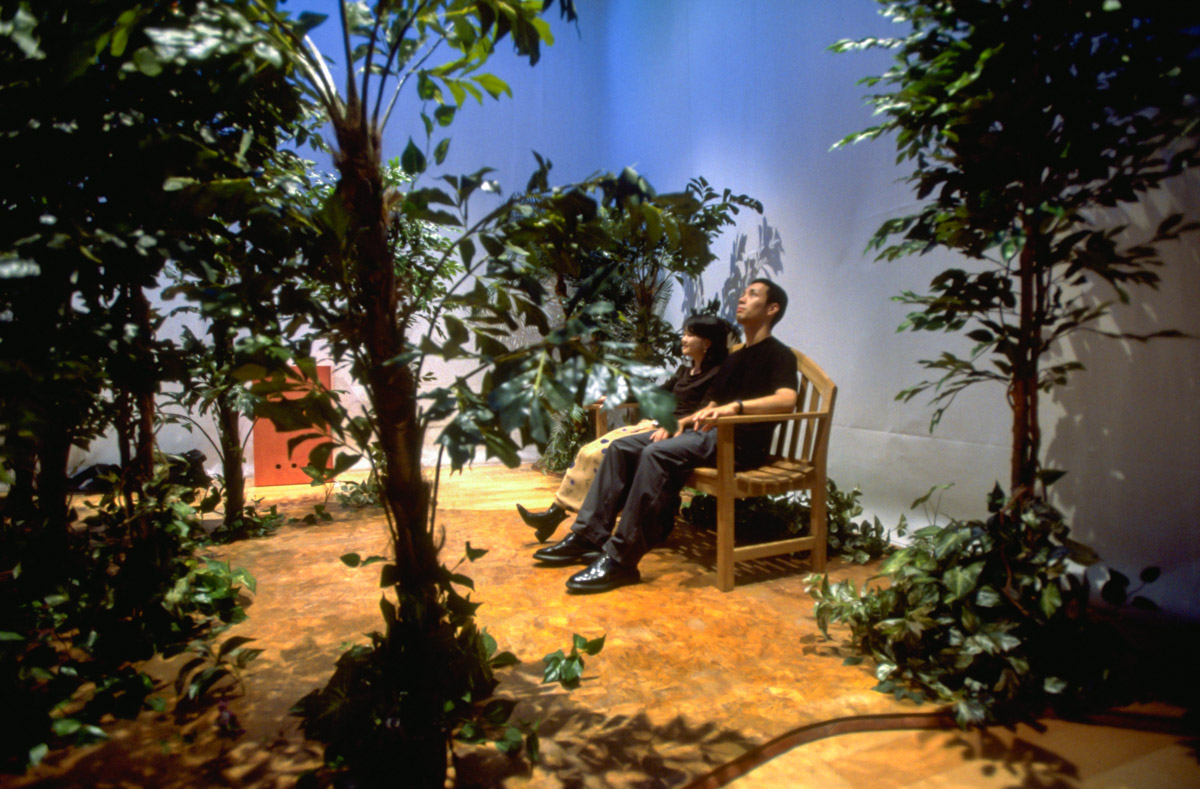Uirapuru
1997
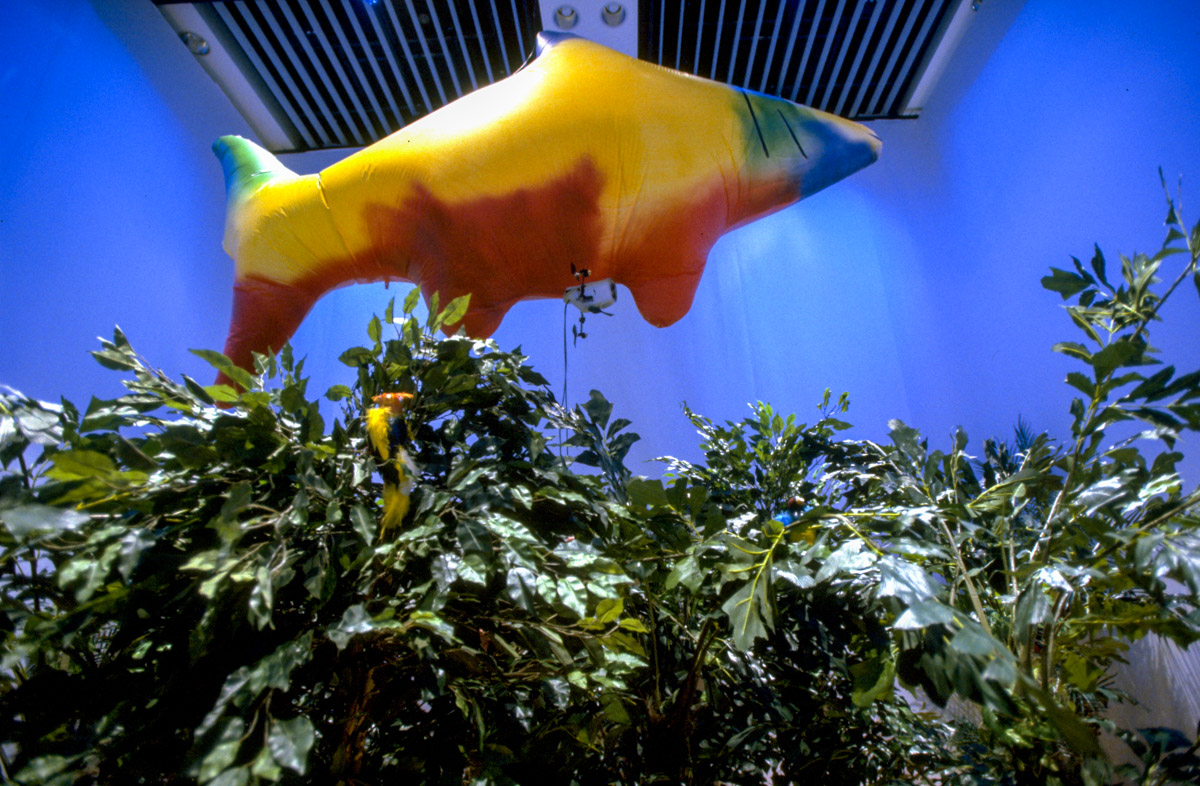
The word "Uirapuru" is the name of both an actual Amazonian bird and a mythical creature. In the rain forest the bird Uirapuru sings once a year, when it builds its nest; even then, only for about ten minutes early in the morning. According to the legend, Uirapuru's song is so beautiful that all other birds stop singing to listen to it. Yet in another version of the legend, a human being is transformed after his death into the enchanted Uirapuru, breathing new life into the silent forest. Both in legend and reality Uirapuru is a symbol of rarefied beauty.
I have always been fascinated by the Uirapuru story and by its dual status as real and legendary. With the interactive telepresence work Uirapuru I create my own version of the legend. In my personal mythology Uirapuru is a flying fish that hovers above the forest, singing and giving good fortune to forest inhabitants. In my version, Uirapuru sings when it hosts the spirits of those who are far away. Uirapuru's forest is populated by "pingbirds", fantastic creatures whose melodies oscillate according to the rhythm of global network traffic. Uirapuru's own spirit is hosted by a virtual fish, who flies and interacts online in virtual space with other virtual fish. Thus, Uirapuru's behavior contributes to increase network traffic and causes the pingbirds to sing more often.
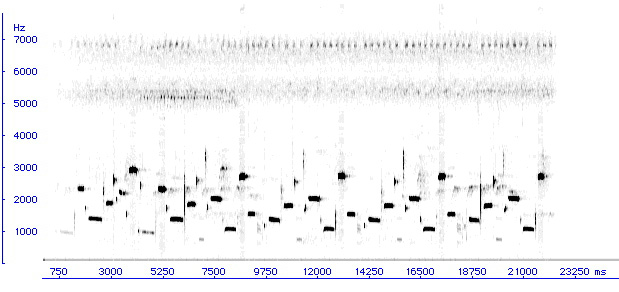
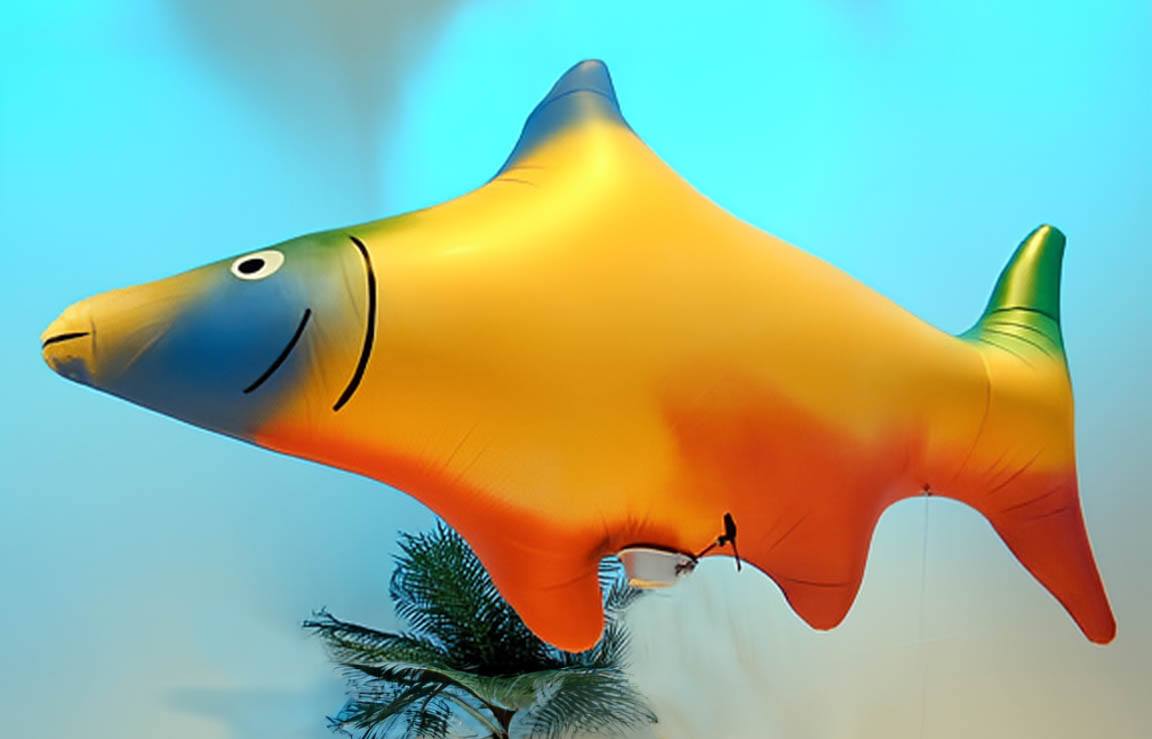
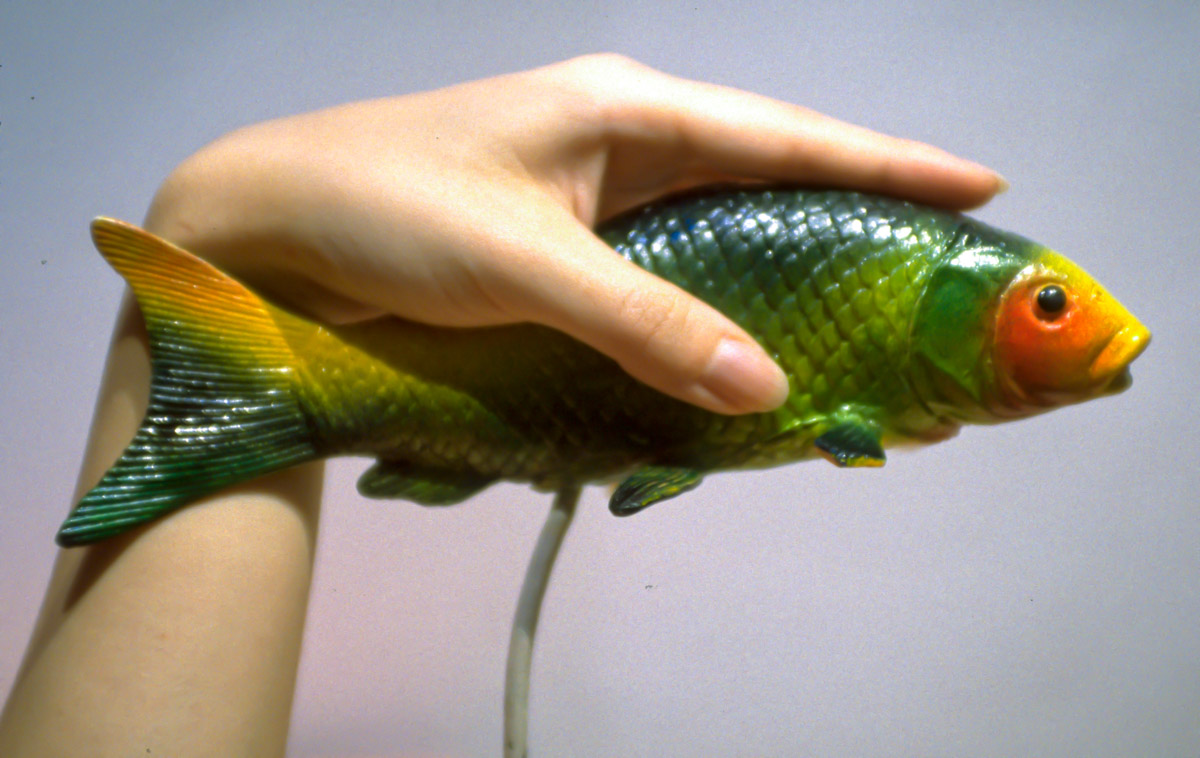
My version of the legend reinvents Uirapuru's dual status as a real animal and a mythical creature through an experience that is at once local and remote, virtual and physical. The flying telerobotic fish is a blimp that can be controlled both through a local interface and through the Web. The local interface is a fish-shaped object that can be handled and moved freely in space. When participants control it, Uirapuru moves accordingly in the gallery. Sensors in the gallery track the movement of the telerobotic fish in three-dimensions and send data to the VRML server. As a result, Uirapuru's avatar moves in the virtual space according to the movement of the telerobotic fish in the gallery. Video from the point of view of the telerobotic fish is seen in the gallery and is streamed live on the web.


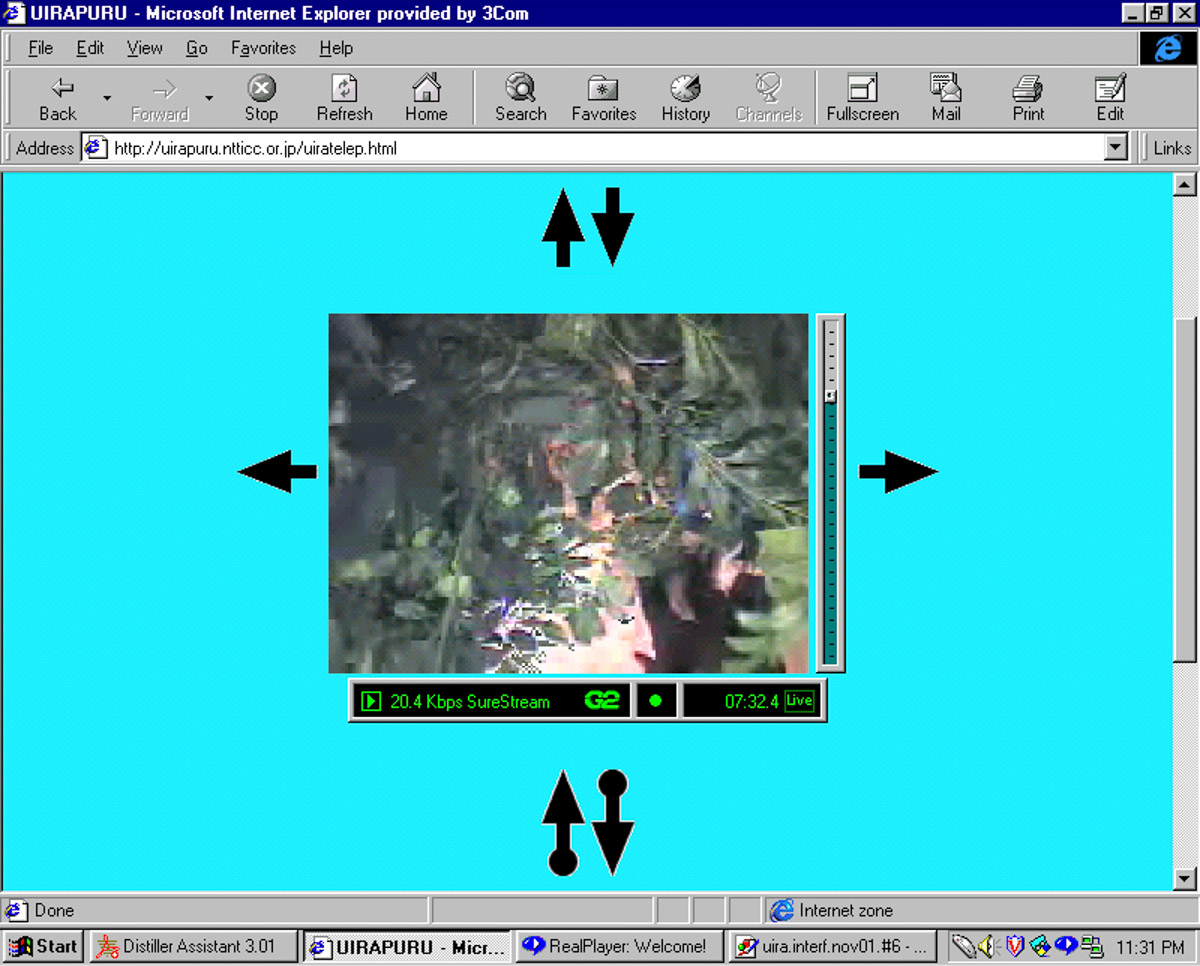
When remote paticipants log on to the multi-user VRML world they are able to interact with Uirapuru's avatar as well as with the avatars of remote participants through navigation and chat. A VRML interface in the gallery also allows the participant to fly their own avatars in the virtual world, interacting with the other fish avatars through movement. The local VRML interface is a fish-shaped object that can be handled and moved freely in space.

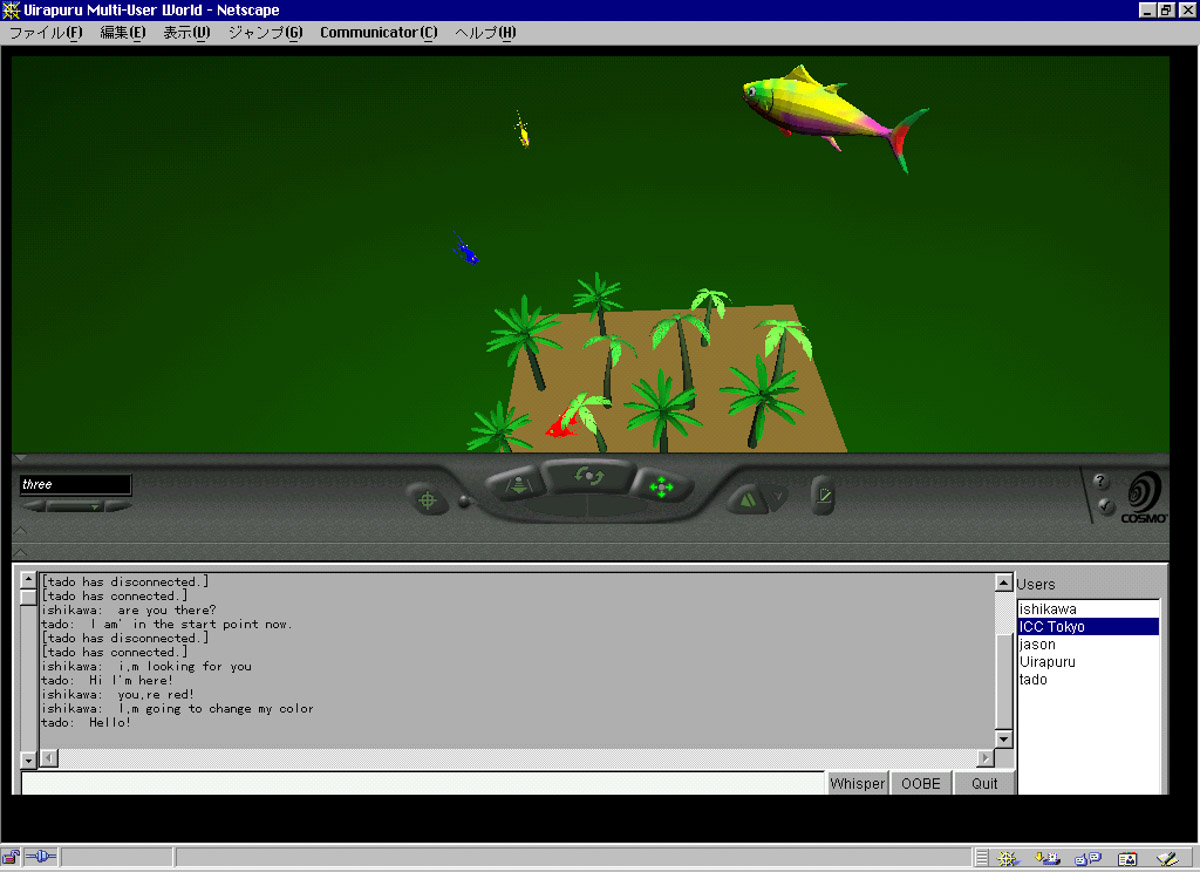
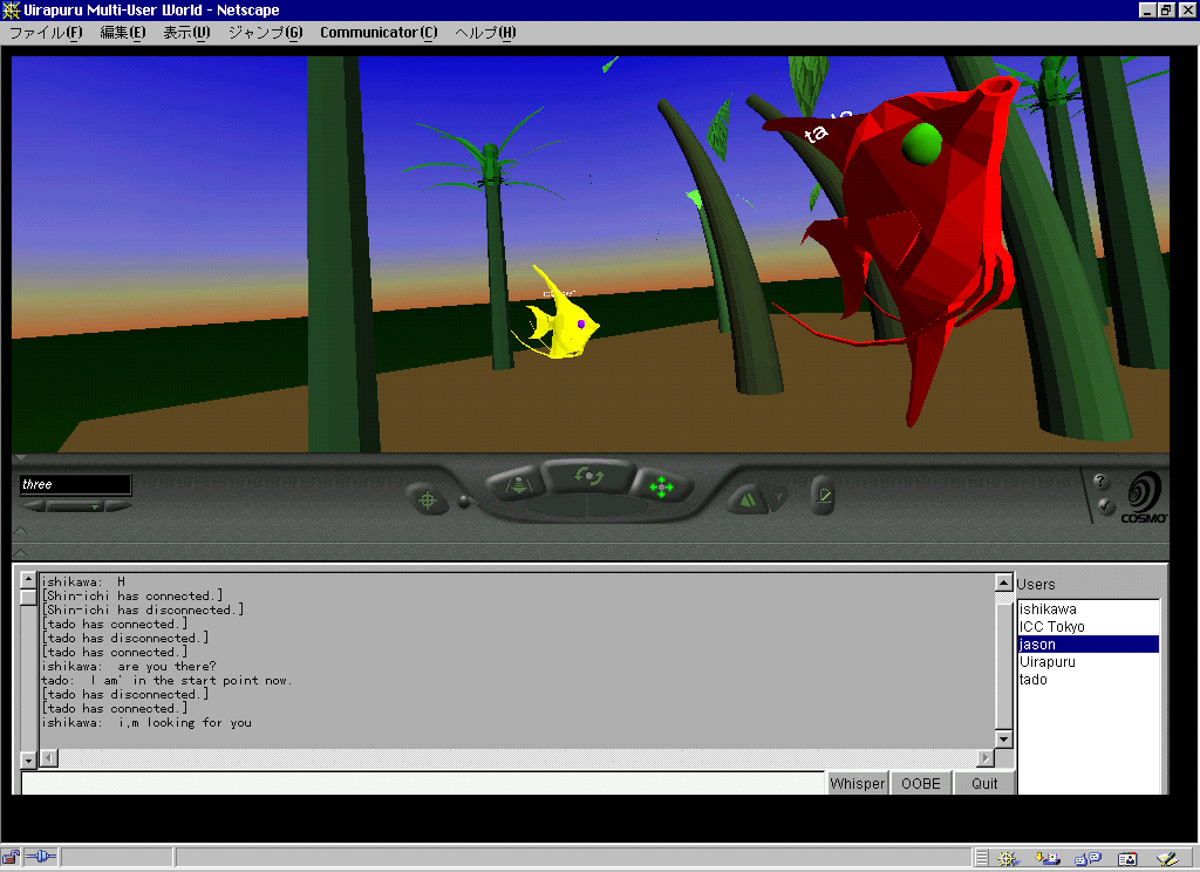
The telerobotic fish hovers above a forest populated by colorful pingbirds (below). Pingbirds are telerobotic birds that send ping commands to servers geographically located in the Amazon region (where the rainforest is located). The pingbirds sing the songs of real Amazonian birds according to the rhythm of global network traffic. The ping command operates by sending a packet to a designated address and waiting for a response. It is used to monitor round-trip travel time and as such is a direct measurement of current Internet traffic. In Uirapuru greater Internet traffic automatically results in the telerobotic birds singing more often.
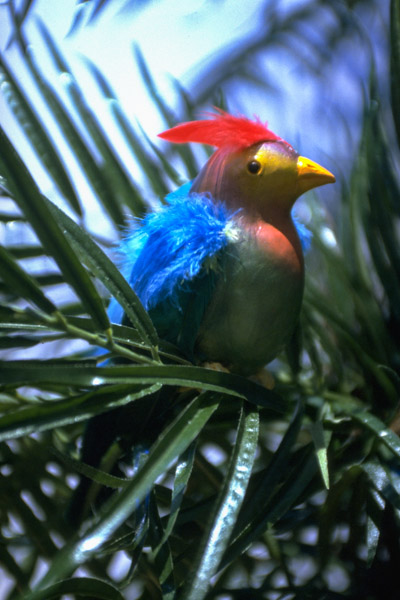
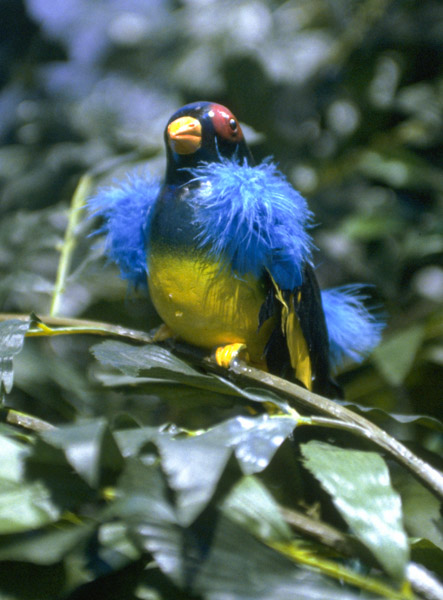
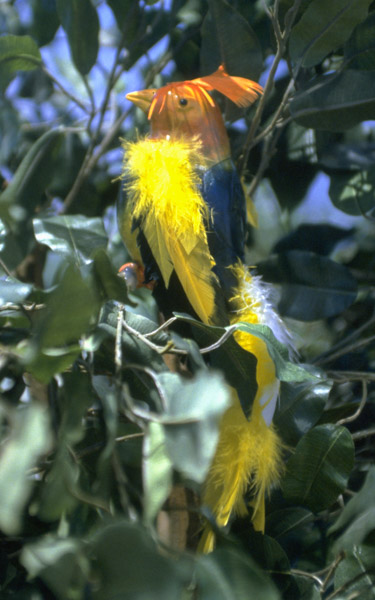

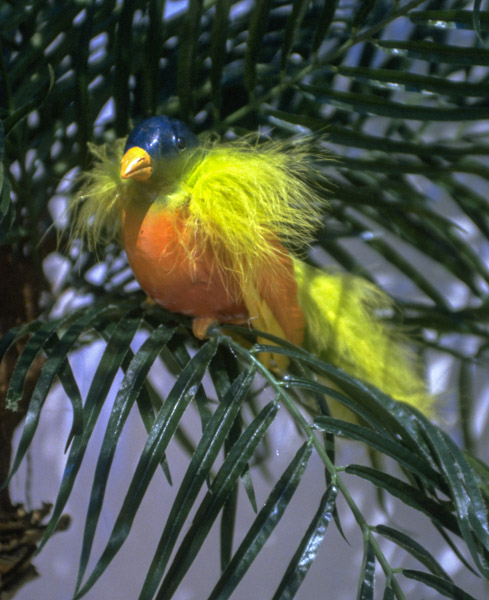
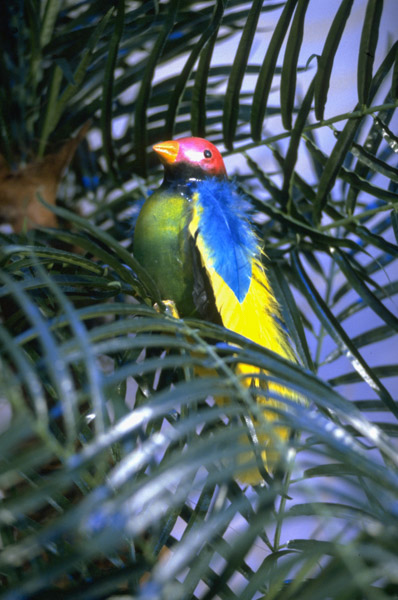
Uirapuru merges virtual reality with telepresence on the Internet. Virtual reality offers participants a purely digital space that can be experienced visually and in which one can be active, in this case the VRML forest populated by flying fish. Telepresence provides access and a point of entry to a remote physical environment, in this case the "Amazon forest." This forest consists of over twenty artificial trees, on top of which vividly painted pingbirds are perched. The Internet's uninterrupted information flow is expressed in the gallery through the melodic pattern of the pingbirds.
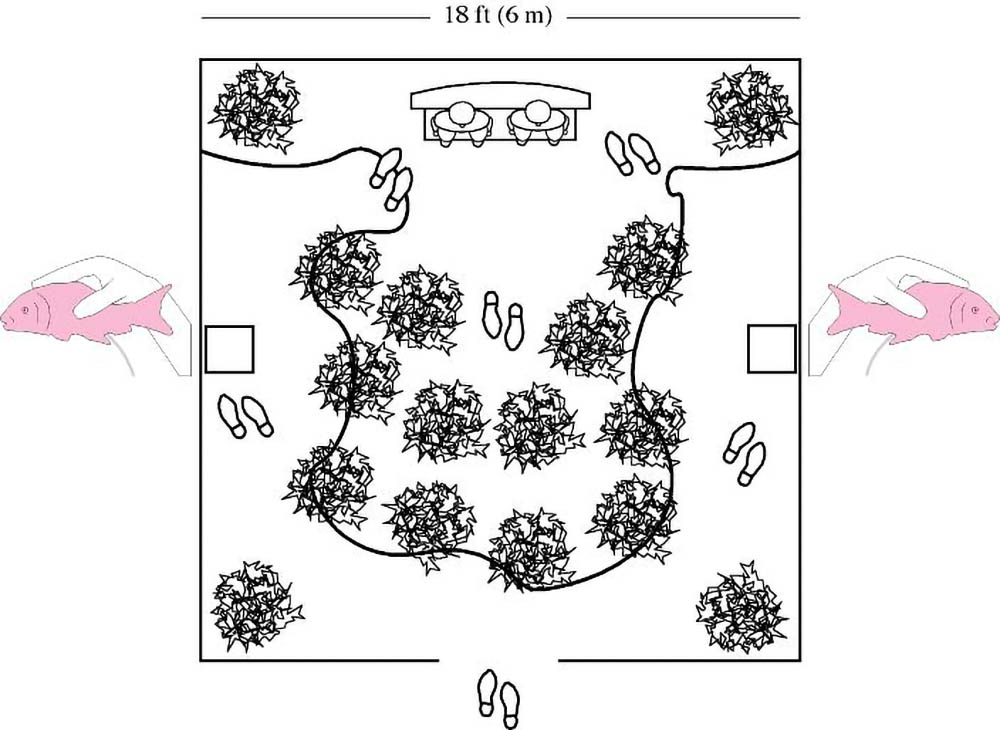

There are three distinct areas in the physical forest. One area displays the live video from the point of view of the flying fish (full frame, 30fps) enabling participants to change the flight pattern of Uirapuru in real time, above the forest canopy. Another area shows the VRML world, allowing participants to see other avatars and to move in the virtual forest. The third area is found in the back: along a pathway, hidden within the forest, a bench awaits local visitors who may rest and enjoy the songs of Uirapuru and the Amazonian pingbirds.
